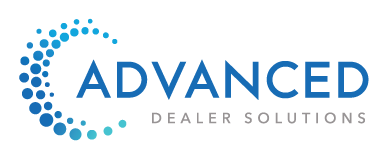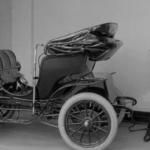Today’s dealers can choose from a plethora of options when looking at participation structures and which may be the right fit for them and their business. Unfortunately, many of the individuals providing dealers information are ill-informed or have inherent biases when presenting what they feel is ‘best’ for their prospect or customer.
Retro, CFC, ARC, ReinsuranceX, NCFC, DOWC, AOWC, DOWC Hybrid, Dealer Obligor, and on, and on, are all being floated around by-product and structure representatives as the ‘best’ choice for the dealer.
Dealers are growing frustrated with the misinformation in the marketplace and are not sure where to turn for unbiased, reliable information.
Participation structures are filled with pros and cons, and there is no ‘One Size Fits All’ solution available. Below are a few tips when evaluating a new participation structure or looking into what you have in place today:
- Always seek the advice of a qualified tax professional.
- There could be a variety of financial implications (positive and negative) when choosing a structure.
- As a note, a sales rep is rarely, if ever, a qualified tax professional no matter how many fancy words they throw out there.
- There could be a variety of financial implications (positive and negative) when choosing a structure.
- Don’t step over dollars to pick up dimes.
- No matter how good a participation structure performs, it will never outrun the effects of partnering with a bad F&I provider and giving up PVR or product sales.
- Too many dealers suffer from poor in-store performance while clinging to the fact they have their own ‘warranty company’.
- The $400 additional PVR or more dealers can get from partnering with the right company will have a greater financial impact than what they think they are going to get from the current structure.
- Decide what is most important to you.
- Several providers have limited solutions available and no matter the dealers’ needs, their structure is magically a perfect fit!
- Appetite for risk, products available for participation, cash availability, control of investment manager and assets, estimated annual production, etc. are all important factors and can be overlooked in the excitement of the moment.
- Who are the shareholders going to be and why?
- There may be alternative ways to allow GM’s, etc. to participate in the structure without issuing them shares.
- How much involvement do you want to have?
- Are you looking for a turn-key solution?
- Annual financial audits, exposure to regulators are some of the ‘gifts’ dealers are surprised with after engaging certain structures.
- Are you looking for a turn-key solution?
- Ask the ‘right’ questions.
- What are the ‘fees’?
- In the world of participation structures, the term ‘fees’ can become very subjective.
- Fees are important. What if you could have an extremely low, or no admin fee, but then found you had a ceding fee greater than 25% with the premiums being ceded only quarterly and split 75% earned and 25% as written.
- Maybe that’s ideal for you, but maybe not.
- Maybe you want an all-inclusive fee and no ceding fee.
- Ask how much of the remittance is being ceded and when is it ceded?
- Those are much better questions than, ‘what are my fees’?
- What are the minimum trust balance requirements?
- What expenses if any, are associated with loans from surplus?
- Are there annual fees beyond annual tax filings and license renewals?
- If so, what are they for and how much are they?
- What are the ‘fees’?
- Who is on your team?
- A proper participation structure has a great team behind it.
- A dealer who has clearly defined goals of what they expect out of their participation structure.
- In-store training & development to increase production.
- A provider with access to numerous structures to evaluate.
- An administrator to set appropriate reserves and provide detailed, transparent reporting.
- An asset manager to execute your investment strategy for your primary and surplus accounts.
- A leading accounting and actuarial firm to help navigate the formation, annual tax filings, etc.
- A servicing team to monitor loss ratios, reserves, production, additional products, etc. on an ongoing basis.
- An insurer with the right CLIP to provide you with the structure you are looking for.
- A proper participation structure has a great team behind it.
- Stay informed.
- I run into too many dealers who know they have a reinsurance position, but have no idea how it is performing, how it is structured, or the investment returns.
- A properly structured and managed position could generate large sums of underwriting profit and investment income.
- Don’t just set it and forget it…
- Monthly cession and bank statements as well as in-depth quarterly reviews should be part of the servicing teams’ cadence in the management of the position.
- A properly structured and managed position could generate large sums of underwriting profit and investment income.
- I run into too many dealers who know they have a reinsurance position, but have no idea how it is performing, how it is structured, or the investment returns.
At the end of the day, the right structure coupled with the right partnership can yield significant returns for you as a dealer. Make sure you are asking the right questions to the appropriate people before making a final decision. If you have questions about how ADS can support your in-dealership goals as well as exceed your long-term participation goals, please reach out to us to schedule a review of your goals, current structure, etc.




